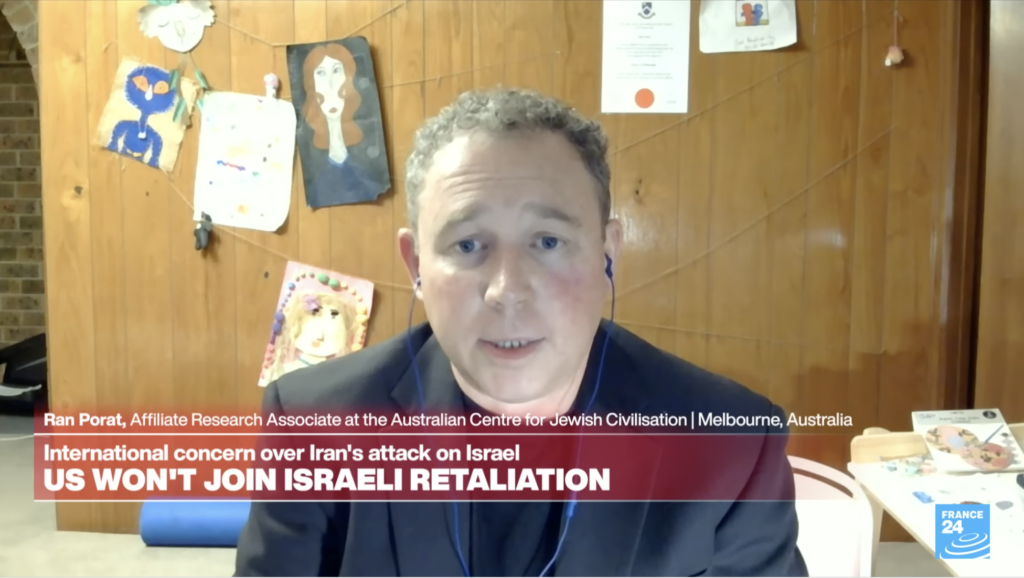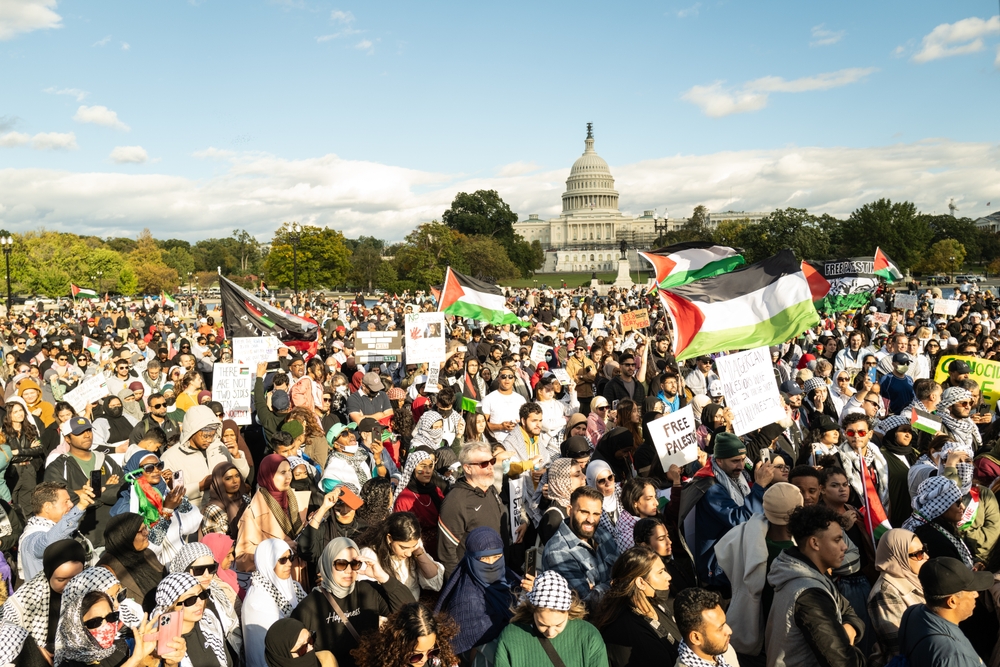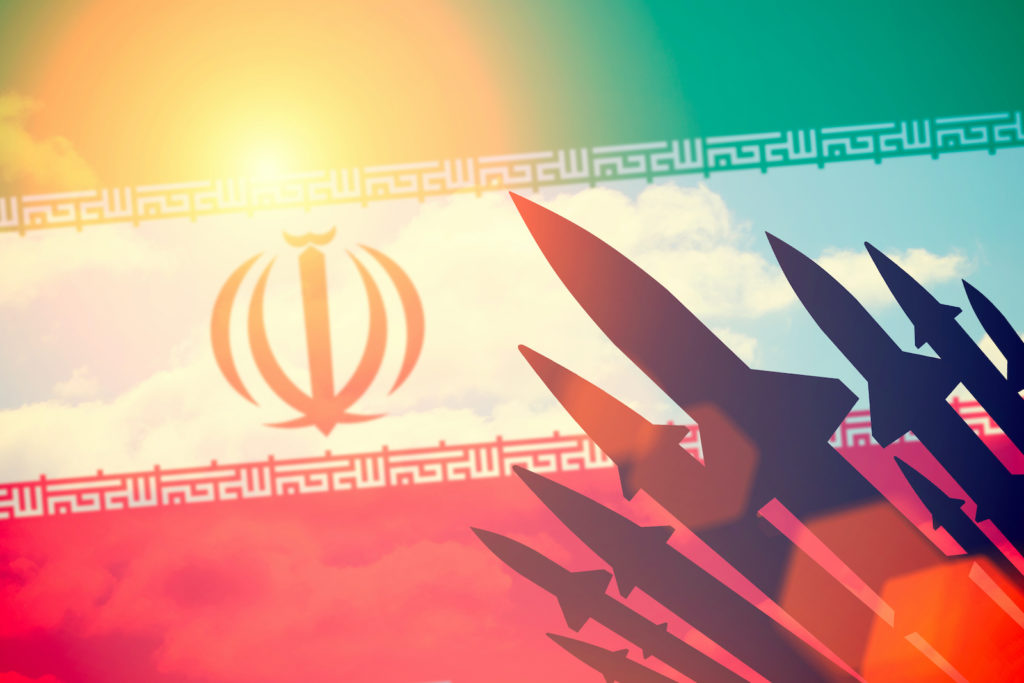UPDATES
Hamas’ post-ceasefire strategy
Jul 11, 2008 | AIJAC staff
Update from AIJAC
July 11, 2008
Number 07/08 #04
This Update features two pieces dealing with Hamas’ strategy now that a ceasefire has been declared.
First up is the always uniquely tuned-in Ehud Yaari (who recently visited Australia) arguing, based on his incomparable sources on the Palestinian side, that Hamas wants the ceasefire to last and will likely seek to extend it even beyond the six months it is scheduled to run. He also says what Hamas most feared was not an Israeli incursion but a continuation of the previous policy of tough sanctions, which threatened their regime’s long-term viability. He says Hamas is now prepared to seek an accommodation with PA President Abbas, and while any final deal will not be in the cards, an interim one might be. For this full analysis from Israel’s most knowledgeable commentator on Palestinian affairs, CLICK HERE.
Next up, Israeli academic Jonathan Spyers discusses Hamas’ extensive ongoing military preparations. He says Hamas is consciously mimicking Hezbollah’s preparations for the 2006 war, and is setting out to be able to inflict steady casualties via rocket fire. He also argues that while weapons smuggling is down, the main reason for this is that Hamas now has all the bulk weaponry and explosives it needs, and is now interested mainly in smaller, higher-tech items. For the whole article, CLICK HERE.
Finally, in a piece previously linked but worth highlighting, Haaretz writer Bradley Burston has some choice words for those who argue that the Jerusalem bulldozer attack last week which killed three people and injured dozens, was a “natural” Palestinian response to “occupation” or other supposed Israeli iniquities. He points out that those who want boycotts against tractor makers for supplying equipment to Israeli authorities who sometimes use them to destroy Palestinian houses seem strangely uninterested in the use of the same equipment to deliberately slaughter Jews. He also says the attack and responses to it make him reassess what Palestinians actually want. For this eloquent plea, CLICK HERE.
Readers may also be interested in:
- Barry Rubin offers some judicious words about the recently signed Hezbollah-Israel prisoner swap deal. A contrasting view comes from Olivier Rafowicz.
- Israel bans a series of charities associated with Hamas, including one that has been in the news in Australia, Interpal.
- An article questioning the effectiveness of aid to the Palestinians in curbing violence. Plus a report that the Palestinians have received almost $1 billion in foreign aid in the last six months.
A Long Truce
Ehud Yaari
The Jerusalem Report, July 21, 2008 edition
The Gaza truce is likely to last a long time, even though Hamas has allotted it only six months. Moreover, there’s a real chance that a new Palestinian political structure may evolve out of the truce, and, with it, new patterns of negotiations with Israel.
Hamas views the truce as an inescapable necessity. They are not proud of the tahadiyeh that they initiated, but there is broad agreement within the organization’s leadership that this course is by far preferable to continued clashes with the Israelis. It is true that Hamas, as expected, is trying to present Israel’s agreement to the truce as evidence of its success in enforcing a balance of terror and in preventing Israel from striving for a military solution. Hamas is even contending that the truce constitutes Israeli reconciliation with its continued rule over the Gaza Strip – at least, that is the way it is marketing it to its own constituency.
But among themselves and in private conversations, more than a few Hamas leaders understand that the truce does not include an end to the economic and diplomatic blockade of Gaza but rather an easing of the restrictions on passage of goods. It’s clear to them that Egypt does not intend to allow the Rafah crossing, whenever it opens, to become the main lifeline for Gaza. The truce may ease the pressure but it won’t remove it altogether.
Hamas’s main fear has been that Israel would simply persist in its policy of military pressure and diplomatic and economic blockade, without launching an ambitious offensive in the labyrinthine alleyways of the refugee camps – the heart of the organization’s operational infrastructure.
Such a “more of the same” policy on Israel’s part could have caused a constant decline in their public support and toppled the Gaza Strip into a quagmire of poverty and decay.
Choosing the truce was therefore the only way in which Hamas could win a time-out. But this was only the prelude to the more important decisions that are already under serious consideration.
The next decision-making junction points towards the possibility of a placatory agreement with Mahmud Abbas and the Palestinian Authority.
Once again, in contrast to Hamas’s image, the organization is willing to renew the dialogue, even at the cost of far-reaching concessions.
In internal discussions, things have reached a stage in which there are even voices that are calling for relinquishing Hamas’s control over the institutions of government in Gaza and retreating from the military coup that the organization carried out on June 12, 2006. According to the reasoning behind this approach, Hamas could allow Abbas to appoint his own ministers, technocrats, to run the Gaza administration while Hamas would not lose any of its military power or political predominance there. Hamas, these leaders say, has turned Gaza into a solid base and no compromise deal could turn the wheel back.
Though they are not yet a majority, many members of Hamas want to reach new understandings with Abbas that would create an impression of reunification of the two parts of the Palestinian Authority. On the strength of this, they hope, the blockade would be lifted.
There are great obstacles to such a path, but anyone who thinks that Abbas would ultimately reject Hamas overtures is making a great mistake. His Fatah movement has no real chance of defeating Hamas. On the contrary, it needs Hamas’s legitimization in order to continue its rule. Most of the people I speak with in the Fatah leadership share this analysis.
It will not be a short-term process. It will take a good few months for such a dialogue between Gaza and Ramallah to get going, but the jockeying for position has already started. And just as the Egyptians are extending their sponsorship and mediation services to the truce, they are doing the same over the issue of “national unity.”
If the dialogue takes shape and a Palestinian government of national unity of one form or another does arise, the negotiations with Israel on the outlines of the final status will take a new direction. Abbas will no longer be considered someone who is discussing an “on-the-shelf” agreement that he does not have the power to implement, but rather as someone who has the authority to close a deal. The emphasis placed today by the international community on security and economic reforms in the West Bank will lose its urgency and a new agenda will take its place.
Hamas does not intend to allow Abbas to conclude a peace with Israel. On this, there is no disagreement at all within the organization. Nevertheless, Hamas is very eager for an arrangement that would extend its truce with Israel to the West Bank as well and pave the way for the restoration of its political power there. Ironically perhaps, it is Hamas that would prefer to see a Palestinian state in temporary borders without a full peace agreement – a goal that Abbas has been consistently rejecting, even though it is the only practical option on the horizon.
Ehud Yaari is Arab Affairs reporter for Israel’s Channel 2 television station.
————————————————————————
Analysis: Fortress Gaza
JONATHAN SPYER
THE JERUSALEM POST, Jul. 2, 2008
Since the agreement on the tahadiyeh (lull) was reached between Hamas and Israel on June 19, the border crossings between Israel and Gaza have already been closed six times in response to Palestinian rocket fire. Israeli officials acknowledge that none of these attacks was carried out by Hamas. Hamas, nevertheless, is keeping itself busy.
The organization’s military wing is putting in place preparations based on a comprehensive strategy for facing an expected eventual large IDF operation into Gaza. Hamas gunmen are training extensively to play their allotted roles within this strategy.
The model for Hamas is Hizbullah’s preparations for and conduct of the Second Lebanon War in 2006. The evidence suggests that Hamas is using its uncontested control in Gaza to effect a qualitative change in its abilities and ambitions.
Hamas’s strategy derives at the highest level from the group’s muqawama (resistance) doctrine. According to this view, Israel’s Achilles’ heel is its inability to absorb large numbers of military and civilian casualties. Hamas believes Israel’s will can be broken through attrition and a steady toll of unexpectedly high numbers of both military and civilian casualties.
In the event of a major IDF incursion into Gaza, Hamas would seek to maintain a steady rain of rockets on Israeli communities around the Strip and to break the sense of armored and air invulnerability hitherto enjoyed by Israeli forces engaging with its fighters. Hamas would of course also try to inflict steady losses of 4 to 10 casualties per day on IDF’s ground forces during the fighting. Looking to the 2006 model, the movement’s planners believe that achieving these goals could be sufficient to break Israel’s will.
To make this possible, Hamas is feverishly training as well as acquiring relevant weapons systems – of a type far superior in quality to those previously associated with the organization.
The weapons systems on which Hamas is thought to be currently training in the Gaza Strip include a wire-guided anti-tank missile, probably the AT-3 Sagger, and additional anti-tank guided missiles: the AT-4 Spigot, the tripod-fired AT-5 Spandrel and the shoulder-fired AT-14 Spriggan – all useful against armor. All these systems have ranges of several kilometers.
In addition, Hamas is thought to have brought into Gaza large numbers of RPG-29 Vampir handheld anti-tank grenade launchers with a range of 500 meters, which are capable of penetrating reactive armor and are considered far superior to the RPG 7 systems used by the movement in the past.
Hamas is also developing improvised explosive devices, i.e. bombs. The organization possesses an Iranian-developed, locally-produced system known as the Shawaz explosively-formed penetrator that it says can penetrate 20 cm. of steel. Hamas also claims to possess air defense missiles, though no information could be obtained on their nature or the veracity of the claim. Imports from Iran and Syria and local production are all playing a role in the movement’s development of its arsenal.
In addition to arming Gaza to the teeth, Hamas is recruiting fresh fighters. Once again, the model is Hizbullah, and the intention appears to be to develop a force part-way between a regular army and a guerrilla force, of the type developed under Iranian tutelage by the Shi’ite Lebanese group. Extensive recruitment has been taking place in the past month. New fighters have been accepted to both the Izzadin Kassam Brigades – Hamas’s long-standing military wing, and to the Executive Force – the newer group created since Hamas’s election victory in January 2006.
The latter force played the key role in Hamas’s rout of Fatah in its 2007 coup. Hamas claims to have around 20,000 men under arms, though some sources suggest that the number may be higher. Again, both Iran and Syria are thought to be playing a role in providing advanced training to cadres from both of these organizations: around 1,000 Hamas men are thought to have trained in one of these countries in the last months.
What does Hamas’s attempt to create “Fortress Gaza” mean? Its political leaders have consolidated their rule internally vis-à-vis other Palestinian forces. They are thought to face a certain problem from yet more radical Sunni Islamist currents among both the rank and file fighters and commanders of their own military organizations. But for the moment, with no serious internal challenge, Hamas is digging in.
The Hamas rulers believe that Israelis want only peace and quiet, which makes them both vulnerable and deterrable. Thus, Hamas is seeking to create a solid shield around its Gaza fiefdom that can be turned into a weapon of attack at a time and situation of its choosing.
Palestinian terrorism as a natural act
By Bradley Burston
Haaretz, 07/07/2008
JERUSALEM – What, exactly, is a decent person supposed to think?
On a quiet and clear morning in Jerusalem, a woman is driving toward the heart of the city, her infant with her in the car. There is nothing to fear.
It is not a military area, it is not a sector of occupation, it is not a settlement – Jews have lived and worked here for more than a century. Jewish doctors and nurses were treating Arab infants, women, the elderly and the infirm here as early as 1902, when Shaare Tzedek Hospital opened across the street.
There is nothing to fear.
Except for the man behind the wheel of a bulldozer, who has taken it upon himself to kill Jews. Not Israeli security force personnel, not occupation troops, not the Shin Bet. Jews. Women and children and the elderly and the infirm. Jews who may be in favor of an independent Palestinian state. Jews who have nothing against Arabs. Jews who may work to end the occupation. Jews.
When the killing starts, the woman behind the wheel does what Jews have learned to do since the Holocaust, and for 2,000 years before that: Save your child. Whatever it takes.
She manages to throw her infant out the side window and clear of the car before the Hero of Palestine steers the massive earth mover toward her car for a second time and crushes it flat.
It doesn’t take long, after the he has finished overturning buses full of Jews – and Arabs as well – and driving over other cars, even backing up to crush one twice, before the public relations and marketing department of Hamas had formulated its praise for the attack.
“We consider it as a natural reaction to the daily aggression and crimes committed against our people in the West Bank and all over the occupied lands,” Hamas spokesman Sami Abu Zuhri told the press.
Natural. Only natural.
The Islamic Jihad’s armed wing could not have agreed more.”The Jerusalem Brigades bless the heroic operation in Jerusalem as the natural reaction to the crimes of the occupation,” it announced.
The attack came after the latest in a series of attempts by groups in the states, some of them atheist/anarchist, some of them Muslim, some of them Jewish, to lobby Prostestant churches and respected universities to divest from Caterpillar, because the IDF uses its bulldozers to demolish Palestinian homes.
I would like to hear them now. Just once. I would like them to divest from terrorism. Not understand it as the natural outgrowth of the crimes of occupation. For once, I would like my sisters and brothers on the left to be every bit as hard on their comrades the Palestinians for taking a bulldozer and crushing Jews, as they are on Israel for bulldozing homes.
Write a letter to Ismail Haniyeh, to Mahmoud Zahar, to Sami Anu Zuhri. Protest in your own communities, for once, calling terrorism what it is. Intentional, brutal, premeditated, immoral. Murder.
What’s a decent person supposed to think?
That it’s all right to launch rockets against residential areas during a cease-fire, because the occupation is still going on? That it’s all right to crush Jewish civilians, because the occupation has not been halted and settlers continue to build homes?
What’s a decent person to think when Palestinian groups fall over one another trying to claim the bulldozer attack? And when one of the groups is the Fatah Al-Aqsa Martyrs Brigade?
What’s a decent person to think when the man who drove the bulldozer was himself the father of two, a construction worker from East Jerusalem, whose desire to kill Jews – and, in so doing, further soil and damage the cause and name of Palestine – was greater than his feeling for the mother who had to throw her baby from a car to save it?
I, for one, would like to ask for proof of what it is that Palestinians really want. I no longer believe that it’s as simple as wanting statehood.
This is what I don’t yet want to admit: that for all these years, in 2008 no less than in 1902, what a critical mass of Palestinians want most, perhaps even more than statehood, may be as simple as the vile thrill of vengeance, as straightforward as nothing more than seeing Jews dead and gone.
Tags: Hamas











